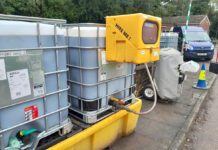Sudden smell and taste loss has become a well-known symptom of COVID-19. However, some people have also woken up to discover that their usual beloved coffee odour has been distorted and now smells like garbage or rotting meat, a condition known as parosmia.
Others smell cigarette smoke, for example, when no odour source is present, a condition called phantosmia.
Now, researchers at the Monell Chemical Senses Centre have teased out the differences between these two conditions and describe them in the journal Chemical Senses. Knowing the distinct patterns of demographics, medical history, and quality-of-life issues associated with each condition may provide insight into the organization and function of the olfactory system, as well as help physicians better treat their patients.
The distinctions between the disorders include:
· Age and Gender: Parosmia patients were more likely to be female and younger than individuals who were phantosmic or had full (anosmic)/partial smell loss (hyposmic). In contrast, phantosmia was more prevalent in 41–50 years olds, and anosmia or hyposmia was more prominent in older individuals. There were no differences in gender between phantosmic vs. anosmic or hyposmic sufferers.
· Cause: Viral infection led to parosmia more often than other smell disorders, while traumatic impact to the head led to phantosmia more often than other disorders.
· Improvement timeline: Parosmic individuals were more likely to say their condition improved over time and recovery coincides with the timeline of physiological recovery. On the other hand, phantosmia was more stable, with no change in improvement across time.
· Triggers: Most parosmic patients cited specific distorted sources of smell, while only a few phantosmic individuals could identify a source of their smell distortions. When describing the triggers of distorted smelling episodes, parosmic individuals cited odours, such as roasted coffee or garlic. In contrast, phantosmic sufferers noted locations, time, specific sensory input, stress, or memories.







